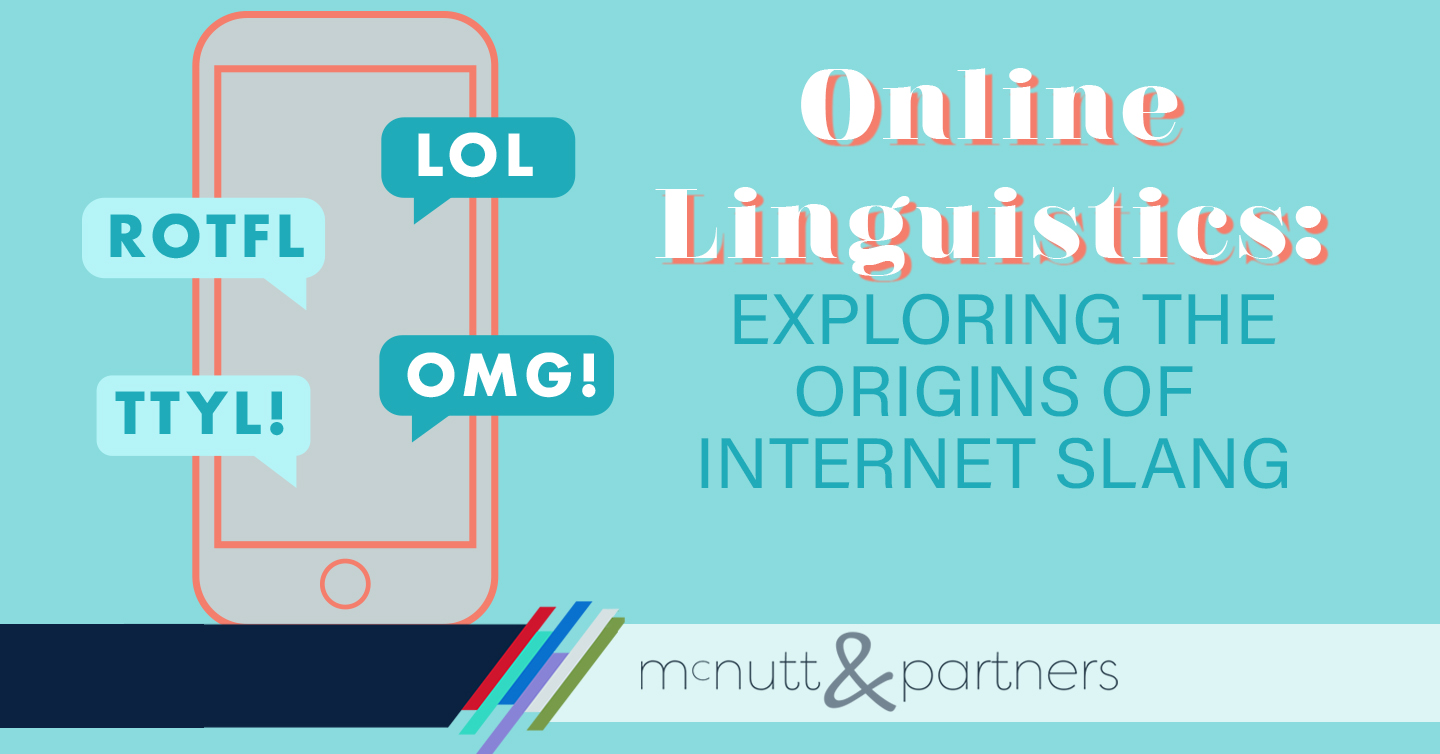Since humans first started communicating with one another, the nature of language has always been determined by both ability and situational need. Ability, meaning the means through which people are able to communicate. Situational need, meaning the way humans communicate depends on what they need to communicate in a given situation. Since the internet became a dominant form of communication, it has exposed humans to a whole new world of online lingo. From abbreviated expressions of emotion to new words entirely, internet slang shines in today’s linguistic spotlight. The origins of internet slang, however, may have more to do with past forms of media than we may realize.
Internet slang’s predecessors
When looking at the origins of internet slang, we have to consider its communicatory predecessors: TV, phone and radio. In 1937, the Association of Public Safety Communications Officials developed the “ten codes,” for radio for the sake of brevity. For example, “10-4” means “message received.” Among other places, the ten codes are used by both law enforcement and truck drivers on CB radios, where CB slang is a language all its own.
Another example from radio is “FYI,” which was in use long before its presence on the internet. FYI, standing for “For Your Information,” was the name of a breaking news radio program in the 1940s.
In regard to telephones, think about 4-1-1, the number that pre-Google was used to dial for information about listings in a local directory. That evolved into the phrase, “Give me the 4-1-1,” which translates to, “Fill me in on the latest info.”
Then, on TV, some words created and popularized by various shows have become official dictionary entries. For example, the word “cowabunga” first appeared on “Howdy Doody” (1947-1960) and was further popularized via “Teenage Mutant Ninja Turtles” (1987-1996). Another, the official word “d’oh,” an interjection used to express dismay when something has gone amiss, comes from everyone’s favorite cartoon dad, Homer Simpson. It was added to the dictionary in 2001.
LOL and beyond
The internet’s barrier to expressing physical emotion (especially before the era of FaceTime and Skype) has much to do with the origins of internet slang. In the 1980s, people used constructions like *smiles* or *shrugs* to indicate emotive action.
By 1989, “LOL” had surfaced. The phrase signifies “laughing out loud” and is still used today. It has even translated to speech to express that something is funny, as people say “LOL,” well, out loud. “LOL” was added to the Oxford English Dictionary in 2011.
And things evolved from there. This Mental Floss article outlines “16 Old School Internet Acronyms” that came from a Web usage manual from the 1990s—many of which might be foreign to the majority of us. Other favorites from the MSN and AOL messenger days include “G2G” (Got to Go), “BRB” (Be Right Back) and “TTYL” (Talk to You Later).
Like we said, many of these have since been given the boot by the internet, as new generations of internet users have devised their own ways of talking online. In fact, to present some of today’s commonly-used internet slang words here would likely only serve to date this article, as internet speech seems to evolve as quickly as people are able to trade messages online.
Categorizing internet slang
Though specific lingo gets dated quickly, the categories into which we can place internet slang are more constant. As the internet became more widely used in more diverse capacities over the past two decades, the language of the internet expanded to match. When considering types of internet slang words, most fall under one of these categories.
Acronyms
Perhaps the oldest form of internet slang, this evolved out of a need to type fewer words while conveying the same message.
Ex: “OMG” for “Oh my god!” “NSFW” for “Not safe for work,” “TL;DR” for “Too long; didn’t read,” “TIL” for “Today I learned”
Acronyms to express action
A subset of the first category, these acronyms express an action indicative of emotion.
Ex: “LOL” and “ROFL” for “Rolling on the floor laughing”
New words inspired by tech
New technology yields the need for new words.
Ex: Social network, Tweet, trending, selfie, meme
Combinations of existing words
Along the lines of new words comes combinations of two existing words.
Ex: Cyberbullying, clickbait, photobomb
Short phrases
Sometimes less is more. Such is the mantra of this category of internet slang.
Ex: “I can’t even,” and “All the feels”
The future of internet speak
From the origins of internet slang to the future, the rules will remain the same that language will be dictated by technological ability and necessity. If we’ve come this far in the past couple decades of mainstream web use, time will only tell what’s to come as trendy lingo fizzles out and new slang takes its place. Though some argue that internet speak is “dulling down” the English language, the other side of the coin suggests that it is in fact enriching it—not taking away what was there, but only adding to our communicative fodder.
McNutt & Partners is a full-service advertising and digital marketing agency. Contact us today for your marketing needs! Call 334-521-1010, or visit our contact page.

